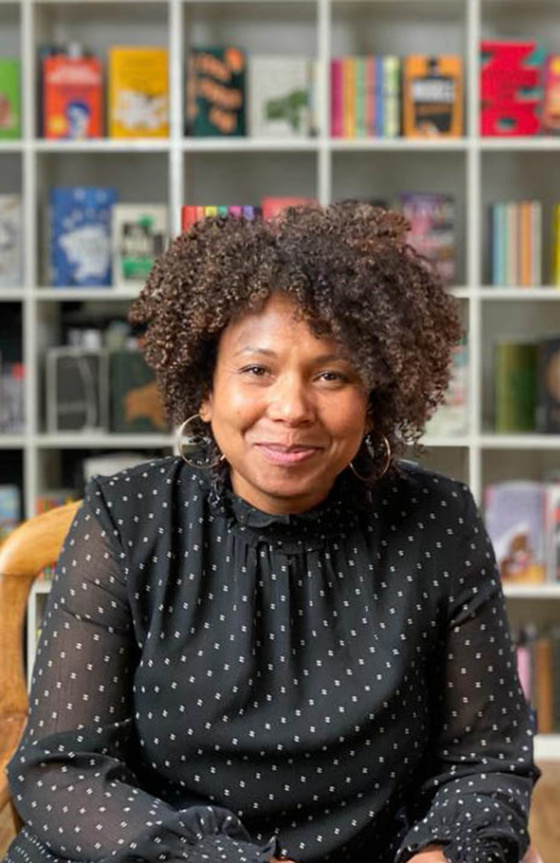For this year’s Cultural eXchanges Festival, we asked some of our Journalism students to write up accounts of several events. Here, Khrista Davis reports on a talk by Donna Payne.

Donna Payne
With a career spanning more than eight years, Creative and Brand Director at Faber & Faber Donna Payne, talked to students at De Montfort University Leicester (DMU) at length about her experiences in publishing.
Payne, who has assisted in the making of book covers such as Kazuo Ishiguro’s ‘Klara and the Sun’ and Sara Pascoe’s ‘Sex, Power, Money’, was one of many guests to speak at the festival, organised annually by final-year Arts and Festivals Management students.
After an introduction from Lyndsey Webster, Programme Leader for Graphic Design (Illustration) at DMU, Payne gave students some golden tips for their portfolios, provided the details behind making book covers and took the audience through her favourite projects.
She said: “Some of my recent projects were my favourite. Faber Stories was a very successful design for a series of shorts by key Faber authors last year.
“The way they were briefed was originally typographic and very low budget, but as it was our 90th birthday project, I really wanted to push it a bit and do something that showcased the design department as well. We commissioned all current and ex Faber designs that were created, all of our favourite freelances, as well as creators that we never got the chance to work with.”

Screenshot of Payne's talk during Cultural eXchanges
Towards the end of her talk, Payne also shared her views on representation within the publishing industry.
“For me, as a Black woman publishing, the Black Lives Matter movement has been a big part of this last year, as well as lockdown. I think we all felt it because we would normally go into the office or our university and we’d put on our professional exterior, but we were all at home and it felt very personal for everybody,” she said.
“I think there were some positive changes because people started to have conversations that were within their family spaces and home environments.
“But within publishing some of the conversations we were having were about just how little had changed really. Diversity in the industry is low at around six percent at the moment. When I joined 25 years ago it was maybe three or four percent, so it’s not a big change.
“The conversations we have been having are not just about BAME representation, but about true representation for the LGBTQ+ community and people from different socio-economic backgrounds. Publishing has been white, middle-class and straight for far too long, and there are lots of reasons we need better representation, even from a business perspective.”
Posted on Tuesday 9 March 2021